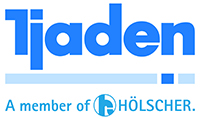.jpg)
Soil Treatment
PFAS was considered to be a miracle product for many decades. However, now that its toxicity, water solubility and extreme persistence in the environment has been proven, PFAS is now considered a ‘forever chemical’, escalating the attention of the scientific, regulatory and political boards towards the issue. This is particularly true since there are very few locations left in the Netherlands where trace levels of PFAS has not been found in the soil, surface water and groundwater.
After years of public health concerns and political turmoil, there have been formulated indicative guidelines for PFAS contamination in soil in the Netherlands. Also, a temporary policy for the reuse of PFAS-contaminated soil has been made.
Moreover, the government has set limits for PFAS-contaminated soil. Sandy and loamy soils with PFAS levels below these set limits are considered cleanable. Off-site extractive cleaning is, in most cases, the best and most cost-effective solution. Soils containing higher PFAS levels may be deposited in a secured landfill. However, due to landfill tax, this is not a cheap option.
From experience, we know that more than 95% of the soil subject to soil washing already complies with the PFAS reuse criteria (industry class). The other 5% concerns soil from PFAS hotspots, such as areas of firefighting foam release and textile manufacturing.
Off-site incineration of PFAS soils at high temperatures should only be utilized when all other options (on-site cleaning, stabilization and containment) are not possible. In several cases, on-site treatment can be an option. One of those options is soil stabilization. During soil stabilization, the PFAS is immobilized using a binding reagent to prevent leaching to surface water and groundwater. Arcadis has long-term references for such projects, especially in the United States.
Contact: Boskalis Environmental - Joop Jansen ( joop.jansen@boskalis.com and Arcadis - Wim Plaisier (wim.plaisier@arcadis.com)
-
- PFAS Cleaning Treatment Solutions
- PFAS Cleaning Treatment Solutions
-
- info@pfasoplossingen.nl
-
- Phone number
- +31(0)646647255




